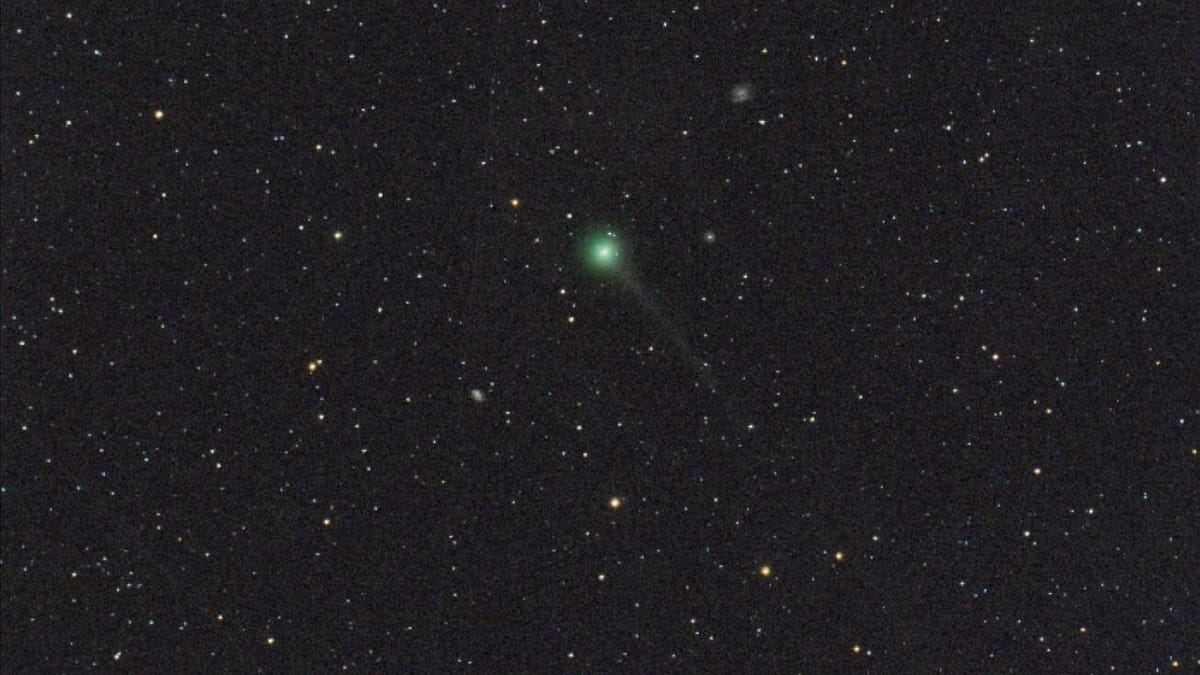Comet Atlas is crumbling, but another is already brightening skywatchers' nights
One big dirty ice chunk is falling apart, but Comet Swan looks poised to take its place.

Comet Swan as seen from Australia.
At the moment a promising comet is fading, a newly discovered cosmic snowball has been spotted in an outburst phase, giving us a bright new distraction from dark days here on planet Earth.
When it it went through a period of rapid brightening in March, Comet Atlas (C/2019 Y4) looked as though it might put on a spectacle in the night sky unlike anything we've seen in years. But comets are famously erratic and unpredictable, and within weeks it became clear that Atlas was breaking up as it flew toward the overwhelming heat and radiation of the sun.
Seemingly on cue, a new bright comet has emerged to delight skywatchers.
Comet Swan (C/2020 F8) is named after the Solar Wind Anisotropies device aboard NASA's Solar and Heliospheric Observatory that was used to discover it. Astronomer Ernesto Guido in Italy was then able to confirm the existence of the new comet, which is currently an 8th magnitude brightness object. That means it's not quite visible to the naked eye, but could be viewed with binoculars or small telescopes.
Our confirmation image of bright new comet SWAN (waiting for the official designation) imaged at 09:30UT of 2020 April 11, through a 0.6-m f/6.5 astrograph + CCD via @TelescopeLiveHQ network.
— Ernesto Guido (@comets77) April 11, 2020
Coma about 5' in diameter and a tail 6' long in PA 220 #astronomy #comets pic.twitter.com/UOvsnrswnn
"It's extremely likely that the comet is in 'outburst' mode," Karl Battams of the Naval Research Lab and NASA's Sungrazing Comets Project told Spaceweather.com.
If it continues to brighten, Swan could become visible to the naked eye in May. But Battams -- who successfully predicted the disappointment of Comet Atlas -- is skeptical once again.
"I doubt the comet will maintain its current impressive appearance, and will quite possibly fade away soon," Battams said, "but we've only been viewing it for a couple of days, so no one knows."
More observations are needed to have a better idea of whether comet Swan will soon be worth staying up late for. I'll be sure to keep you posted as to whether it shines or fizzles.

